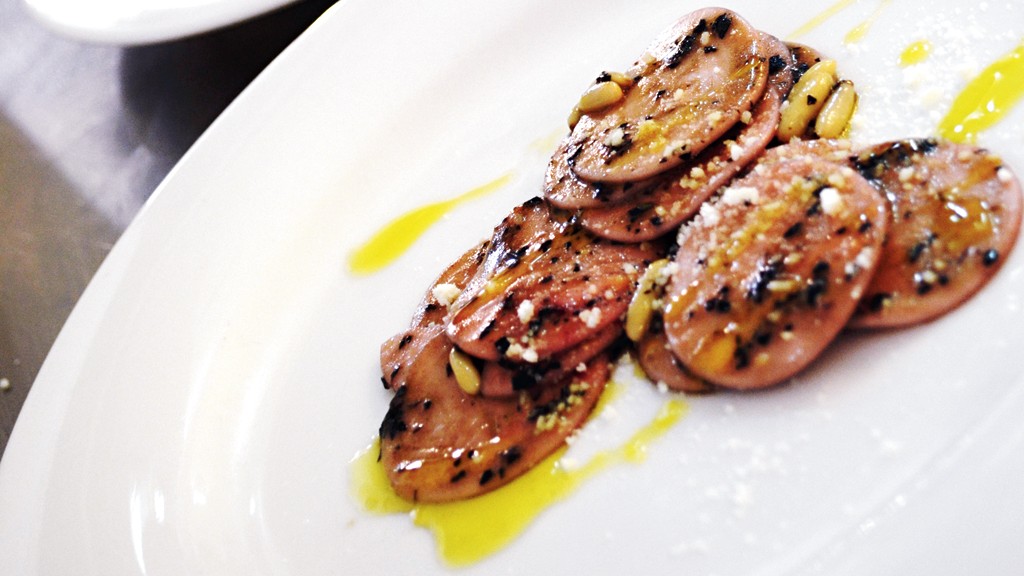Today is Mother’s Day. Normally a day of great joy and commemoration throughout the world, especially among the urban populace. In India, too, these observances are gaining strong ground and are usually celebrated with reverence and gestures honouring the most important member of the family — the mother.
Each year, most hotels, restaurants and clubs have special promotions and campaigns to honour Mother’s Day and come out with special themed menus and the like. We at Flurys also create special menus and campaigns and especially bespoke theme cakes to celebrate this occasion, and they are available this year too.
It is true that this year, just like the last, has left us with a great deal of anxiety and restrictions and most people are uncertain and some even slightly pessimistic about the future. In my view, this occasion to celebrate the mother, the root of our existence, is but an opportunity to convey our gratitude and to avow anew our pledge to love and care about our mothers more than ever before and that the most special bond of humankind will develop further and stronger.
I had written in a column earlier that almost all the great chefs of the world, the ones cooking with the most exquisite and expensive ingredients and creating elaborate multicourse menus, when asked which food they like best, do almost invariably recall the food that their mothers cooked.
Talking about myself, I grew up in a pure vegetarian family and even after travelling across the world and eating and cooking some of the most exquisite dishes, still find my sweetest spot in the simple, home-cooked kadhi-chawal cooked by my mother and, now, thankfully honed flawlessly by my wife, the mother to our children, who also enjoy it a lot.
In this column, I will try and trace the history of the celebration of Mother’s Day, along with the influence of mothers in the culinary development of the world and the importance of heirloom recipes and how these are becoming the current culinary trend.
The History
Although historically, mothers and motherhood have been celebrated in all ancient cultures, including our own, it was mostly to honour the mother goddesses and not so much the woman of the house. There is the tradition of observance of the early Christian festival of ‘Mothering Sunday’, celebrated on the fourth Sunday in Lent, where churchgoers would return to their ‘mother church’ for a special pre-Easter service.
Over a period of time, this tradition transformed into a more secular observance where the children would present their mothers with flowers and gifts, all across England and Europe. This custom, in due course, merged into the American tradition of Mother’s Day, which we all now celebrate, falling on the second Sunday of May each year.
The present form of this observance is attributed to a lady named Anna Jarvis of Philadelphia in the US, whose mother Reeves Jarvis had been instrumental in empowering women’s groups in the mid-1800s. In 1914, the American president Woodrow Wilson made it a national holiday and is quoted famously as having declared it a day dedicated to ‘the best mother in the world — your mother’.
Irrespective of the historical developments, however, I believe that we should really celebrate our mothers every day, their extensive, absolutely significant roles in our lives and the true life force and nurturer since, without a shred of doubt, home is where the mom is!
Role of Mothers in cuisine development
Although the best professional chefs in the world are mostly male, most cuisines throughout the world, indeed, were developed by the women of the house. We chefs mostly just built on the basic culinary concepts and recipes that were either taught to us professionally or we grew up seeing our mothers and other women in the household preparing.
According to a report by FAO, The Food and Agriculture Organisation of the United Nations, women produce 60 per cent to 80 per cent of the food in most developing countries and are responsible for half of the world’s food production, yet their extremely important contribution towards food security and nutrition hasn’t been critically recognised.
Indeed, even today, 72 per cent of all women in the world cook family meals regularly and most of this food is what has been traditionally passed on from generations. Although many women and men now try and make foods of other cultures and cuisines at home, again those foods are also mostly based on traditional recipes of those regions. It might sound slightly paradoxical, but professional cooking, since its very early days, has been recognised as ‘masculine work inspired by the feminine figure’.

The power of heirloom recipes
While the recent years have seen a strong surge of ready-to-cook and pre-packaged foods, also of modern interpretations and ‘fusion’ of food recipes and concepts, it is still true that the most loved and sold food across the world is still the tried and tested traditional recipe-based foods that offer familiarity and sensory satisfaction. The latest culinary trend of ‘comfort food’ is nothing but recreating some of the global traditional recipes and serving those the same way that they have been for generations.
We at Flurys have also see an overwhelming number of patrons frequenting our eatery and enjoying the traditional recipes that we have been able to preserve and serve over the last century, almost. Many mainstream chefs across the world have also created culinary shows and menus, even restaurants, to recreate the heirloom recipes of their mothers and to present them without much meddling.
The idea is to keep alive the culinary treasures of yesteryears and pass their unique flavours and characteristics to the guests at large and also to the next generations since most heirloom recipes are passed on from the mothers to their daughters and daughters-in-law and mostly not documented. One of the main characteristics of all heirloom recipes is the approximation of ingredients based on personal choice, availability and experience.
Even as consummate chefs, we struggle to create standardised, consistent food items in the absence of clear recipes and can only wonder how the recipes created by our mothers tasted the same, each time, all the time; that, in my view, is the true power of the heirloom recipes.
The trend of Comfort Foods
According to a report in Forbes, the concept of comfort foods, simple, traditional foods that we are used to and identify with, has dominated the food trends overwhelmingly in the last year. While a large part of that trend has to do with the emergence of the pandemic and with the exigencies of social distancing and quarantining, people have found familiarity, emotional support and solace in the foods that they ate as kids.
In that sense, nostalgic foods, mostly cooked by our mothers at home, have made a remarkable comeback in the popular food culture. So much so that in a study conducted by OnePoll, it has been discovered that Americans chose to eat comfort meals at least five times a week during this pandemic. In my view, the trend of comfort foods will only keep getting stronger and chefs and food establishments across the world will suitably incorporate traditional, unpretentious comfort foods in their menus to cater to this demand.
Another key takeaway of the same survey is that people are spending more time in their kitchens and are trying to cook foods that they grew up with, indicating that the diners, by and large, want to go back to the basic flavours and preparations compared to the hitherto surging trend of pre-prepared meals.
While I would definitely want to give out a recipe that I grew up having as a kid, I think those will be too simplistic and not really something very different to what most of us eat every day at home. A few years ago, while on a trip to Italy, I had this unique chance — I was invited to the home of one of the staff members of the hotel I was staying in, and the simple food, cooked by the very old mother of that staff, really blew my mind away.
It was an extremely simple recipe of homemade pasta, as you would well expect in any self-respecting Italian household, it was made in an entirely different way, and was a recipe passed down the generations. The pasta itself looked different, I later came to know it was called corzetti and was shaped as little dough ‘coins’ and the process of making the dish, although very simple, was slightly different from that of other pasta dishes that I had had.
The old lady was very kind to give me the recipe and I have prepared that many times and have enjoyed it always, here I present the same recipe, in honour of the lovely Italian mother, on this Mother’s Day.
Pictures: The author and Shutterstock
Traditional Corzetti Pasta with Basil, Pine nuts and beetroot

INGREDIENTS
• For the pasta
• Flour: 500g
• Eggs: 5
• Fine semolina: 100g (you can grind the normal semolina until fine)
• Salt: 10g
• Olive oil: 20ml
• For the sauce
• Fresh basil: 100g
• Olive oil: 30ml
• Salt and pepper:
To taste
• Parmesan cheese: 25g
• Garlic: 5g
• Walnut: 50g
• Roasted beetroot: 50g
METHOD
• For the pasta
• Sieve the flour and the salt together, add the semolina and lightly whisked eggs and the oil, incorporate well.
• Knead the dough with a strong hand for at least 10 minutes, do not add any more liquid, the dough should be quite hard; you can use a food processor too, if available. Rest the dough for an hour, covered in plastic film.
• Later, cut the dough into small pieces and roll as thin as possible, a pasta sheeting machine really comes handy. Cut into the shape of small discs — ‘coins’. The cap of bottles can be effectively used for this. Cover with a damp cloth until required for use.
• For the sauce
• Blend the beetroot, olive oil and garlic. Add the other ingredients and blend till coarse, do not make it too smooth.
• For the assembly
• Cook the pasta in heavily-salted boiling water for 4-5 minutes, do not overcook. Add the basil sauce and toss lightly.
• Serve sprinkled with toasted pine nuts, freshly grated parmesan and a drizzle of extra virgin olive oil.
• Can be served with crusty bread, a glass of chilled dry white wine or just as it is.
• Corzetti is a very traditional pasta of the Ligurian cuisine of northwest Italy and is actually stamped as per the different regions and families.

Vikas Kumar is the executive chef of Flurys. You can reach him at vkumar@flurys.com











